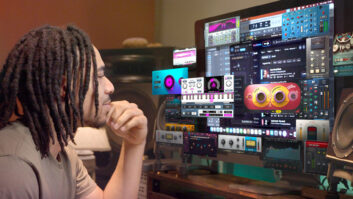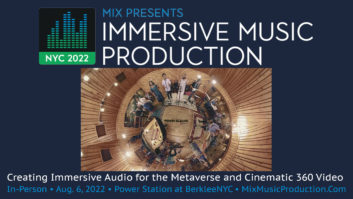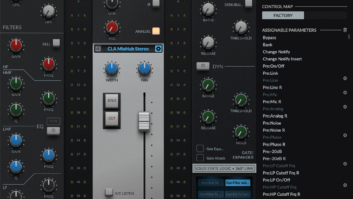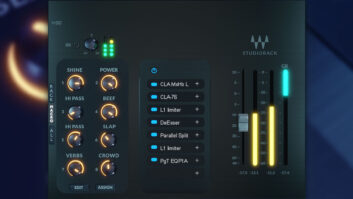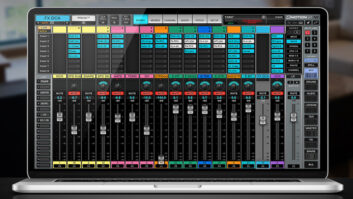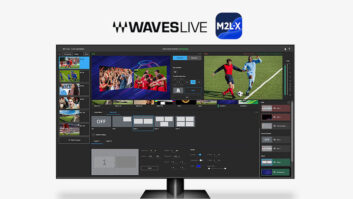
Waves Ltd. announced a major expansion of its IR Convolution Reverb plug-in series. Introduced today are IR-360 (pictured), for multichannel surround sound; IR-1 version 2, which now lets users capture their own samples; and IR-L, an entry-level light version offering simpler controls. Waves also announced the launch of www.Acoustics.net, which offers a newly expanded library of downloadable impulse response samples created by the company and submitted by users.
“We’re challenging the status quo by offering more products, better samples and far more control over the sound than our competitors—all with the pristine sonic quality for which Waves is known,” commented Waves CEO Gilad Keren.
IR-360 is a surround sound convolution reverb and IR-1 V.2 include newly added controls for greater customization. The setting of each environmental parameter can generally be varied from 0.25 to four times its natural value. The user can vary the RT60 (reverberation time) of an actual sampled space, and change the size of that space. There are options to shape the decay envelope to suit the application, change the reverb density, analyze the frequency response and derive the room nodes, use de-correlation to optimize the stereophonic character of the reverb and add gain and pre-delay to each portion of the reverb curve. Exclusive filtering techniques enable the damping to be precisely controlled, while a 4-band parametric EQ allows tone adjustment of the reverberation.
A new feature now lets IR-360 and IR-1 V. 2 users capture the sound of acoustic spaces and hardware devices by playing an included sweep signal into an acoustic space or through an outboard processor and recording the result. The software then lets users import the recording to create a custom impulse response that’s ready to use.
Samples of actual environments in the newly expanded library employ a unique combination of microphone array, including ORTF, and Soundfield microphones mounted on a computer-controlled turntable, for accuracy and realism. Venues included well-known spaces such as the Sydney Opera House, Rome’s Santa Cecilia Concert Hall, Manhattan’s Birdland jazz club and more. Each was sampled from multiple locations, at 96 kHz and 32-bit floating point for maximum resolution, dynamic range and SNR.
For specifications about this product, please go to www.waves.com and check out the new Website at www.Acoustics.net.
